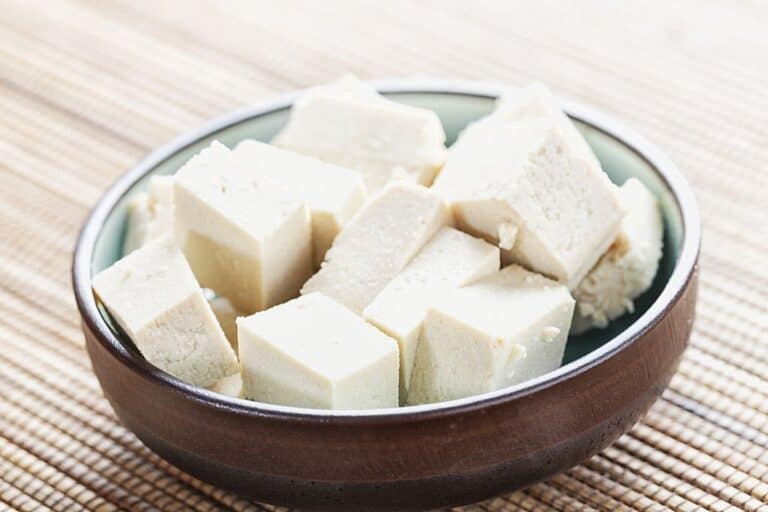Does Sesame Oil Need To Be Refrigerated? Best Way to Store Sesame Oil

Sesame oil is an essential ingredient in many different cuisines and cultures. It has a distinct flavor, making it popular among cooks and chefs. This versatile oil can be used as an ingredient in cooking, baking, and as a condiment. In traditional medicine, sesame oil is also often used because it is thought to have many health benefits.
While some oils need to be refrigerated after opening, the question of whether sesame oil should also be stored this way is often asked.
This article will help explain the answer to that question. Readers will find out what storage requirements are best for sesame oil, why they are important, and how they can keep their sesame oil fresh. We’ll look at what makes sesame oil so unique and discuss its shelf life under different conditions.
Sesame Oil: What it is and Where it Used?
Sesame oil is a type of vegetable oil that is extracted from sesame seeds. It has a rich, nutty flavor and is commonly used in many different cuisines around the world.
Sesame oil is used in a variety of dishes and cuisines around the world, including Indian, Chinese, Japanese, Korean, and Middle Eastern cuisines. It’s also used in a lot of traditional dishes, like tahini, hummus, and baba ghanoush.
Sesame seeds come in two main varieties: white and black. Sesame oil can be made from either type of seed, and the color of the oil depends on the type of seed used.
White sesame seeds are typically used to make light-colored sesame oil, while black sesame seeds are used to make darker-colored oil. Sesame oil comes in both refined and unrefined forms. Unrefined sesame oil has a stronger flavor than refined sesame oil.
Sesame oil is widely used in cooking and is known for its high smoke point, making it suitable for high-heat cooking methods such as stir-frying. It is also often used as a condiment or seasoning in salads, sauces, and marinades, among other things.
In some cultures, sesame oil is also used as medicine because it is thought to reduce inflammation and fight free radicals.
Types of Sesame Oil
Sesame oil is classified into two types: unrefined and refined. There are several key differences between refined and unrefined sesame oil.
One of the main differences is the level of processing that the oil undergoes. Refined sesame oil is made from sesame seeds that have been stripped of their natural oils through a process of heating and chemical treatment. This makes an oil that is clear, has no smell, and has a high smoke point, so it can be used for high-heat cooking like stir-frying.
But during this process, many of the healthy nutrients and flavor compounds in sesame seeds are also taken out. This makes refined sesame oil less healthy and tasty than unrefined sesame oil.
Unrefined sesame oil, on the other hand, is made from sesame seeds that have not been subjected to the same level of processing. Because of this, unrefined sesame oil keeps many of the healthy nutrients and flavor compounds found in sesame seeds. This makes it a healthier and tastier choice. However, it also has a lower smoke point, making it less suitable for high-heat cooking methods.
Another difference between refined and unrefined sesame oil is the color. Refined sesame oil is typically light in color, while unrefined sesame oil can range from light to dark depending on the type of sesame seeds used.
When choosing between the two, it is important to consider your specific needs and how you plan to use the oil.
Sesame Oil Shelf Life
The shelf life of sesame oil depends on several factors, including whether it is refined or unrefined, how it is stored, and whether it has been opened or not.
Sesame oil that has been refined has a longer shelf life than sesame oil that has not been refined. During the refining process, impurities and other things that can make the oil go bad are taken out. This makes the oil last longer.
Refined sesame oil can last for up to two years when stored in a cool, dry place away from direct sunlight. It is also important to keep the lid tightly closed to prevent the oil from oxidizing or becoming rancid.
Unrefined sesame oil, on the other hand, has a shorter shelf life due to the lack of processing. It goes bad and turns rancid faster than refined sesame oil because it isn’t as pure. Unrefined sesame oil should be stored in a cool, dry place away from direct sunlight and used within six to nine months of opening. If unopened, it can last for up to a year.
It is important to note that both refined and unrefined sesame oil can become rancid over time, even if stored properly. Rancid oil can have an unpleasant odor and taste and should be discarded.
To get the freshest and most flavorful oil, buy small amounts and use them up within a few months of opening.
Does Sesame Oil Need To Be Refrigerated?
In general, sesame oil does not need to be refrigerated. Unlike most cooking oils, sesame oil can actually be stored at room temperature for up to two years.
Here are some of the reasons why:
- Sesame oil has a high smoke point. This means that the oil starts to break down and become rancid at a much higher temperature than other cooking oils. This makes it better suited for high-temperature cooking and less likely to spoil if stored outside of the fridge.
- Sesame oil is rich in antioxidants, it helps protect against oxidation which further prevents spoilage.
- Finally, sesame oil also has natural preservatives called lignans which help keep the product fresh for longer when stored correctly.
Refined sesame oil, which is made from sesame seeds that have been heated and treated with chemicals to remove impurities and extend the shelf life of the oil, does not need to be refrigerated. This type of sesame oil is less prone to rancidity and can be stored at room temperature for up to a year.
When You Need to Refrigerate Sesame Oil?
When unsaturated fats are exposed to oxygen, light, and heat, this is called oxidation. Storing sesame oil in the fridge can help protect it from this. Also, putting the oil in the fridge keeps bacteria from growing on the surface of the oil.
If you want to store it in the refrigerator, store it in an airtight container and keep the temperature between 32 and 50 degrees Fahrenheit. This helps maintain its shelf life.
The Best Ways to Store Sesame Oil
It’s important to store sesame oil properly so it lasts for as long as possible and retains its flavor. Depending on how quickly you plan to use it, there are a variety of storage methods that can help you get the most out of your sesame oil.
For short-term storage, keep your bottle of sesame oil in the pantry or cupboard where it won’t be exposed to direct sunlight or heat. Make sure the lid is tightly closed after each use; if stored correctly, unopened bottles can last up to two years.
Once it’s opened, though, you should eat it within three months for the best sesame oil taste and quality.
If you plan to keep your opened sesame oil for longer than three months, store it in the refrigerator. Sesame oil should also be stored in an airtight container to protect it from oxygen, which can cause it to go rancid more quickly.
In general, it’s best to store sesame oil at room temperature if it is refined and if you plan to use it within a year. By following these storage tips, you can ensure that your sesame oil stays fresh and flavorful for as long as possible.






